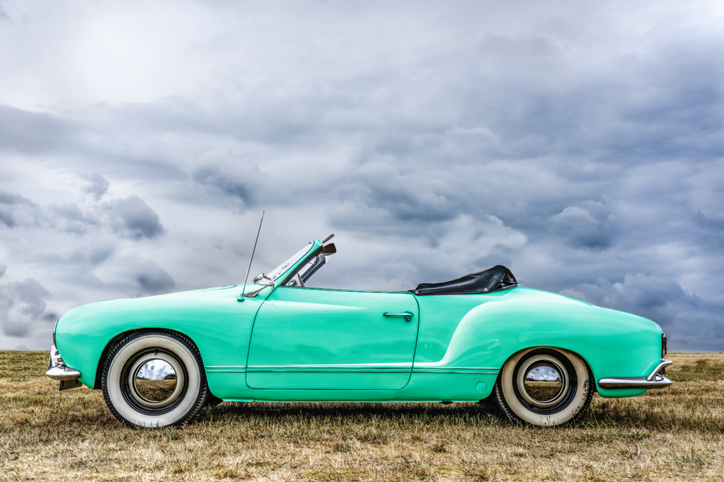
As most car fans know, convertibles, also referred to as cabriolets, give drivers the ability to choose whether to drive with the roof up or down. These models can be pretty fun to take for a joyride, especially during the warmer seasons.
Anyone taking a closer look at a convertible would notice that they’re simply built differently. Let’s take a closer look at the reason why convertibles are the way that they are, and how they came to be.
An Auto Body Repair Technician Might Be Interested in the History of Convertibles
Convertibles, while defined by their roof-removing option, come in a variety of shapes and sizes. And within the history of the convertible vehicle, there are a wide range of different models. Convertibles came to be during the late 1800s. The earliest cars were typically manufactured without roofs or sides, and textile and folding leather roofs were introduced to vehicles as manufacturers began to produce engines with higher power capabilities. Faster cars created the need to give drivers the option of a roof, and these early vehicles with removable roofs, usually in the form of leather or textile, were the first versions of convertibles.
However, as a grad of an auto body training might know, the mass production of steel bodied vehicles in the 1920s made the convertible model less common. The convertibles that remained were typically marketed as luxury cars, but today, convertibles are more accessible to the average buyer.
What Sets a Convertible Apart from Other Cars
There are a few different things that set convertibles apart from typical steel-bodied cars. Convertibles often only have two doors, for example. This is because they have no “B-pillars,” the pillars responsible for attaching the rear doors of the car, located between the front and rear doors. Typical cars have one to four structural pillars which supply the structural integrity between the bottom and the roof of the car. Convertibles only have “A-pillars,” the pillars closest to the front of the vehicle responsible for keeping the windshield in place and providing a place for the front doors to attach.
The two doors on convertibles are usually bigger to allow for back-seat access, as it’s usually not possible to accommodate rear doors into a convertible’s design. A convertible’s design also must account for the roof, which can be removed and stowed in many different ways, depending on the model of the convertible. It’s important for an auto body repair technician to be familiar with these design differences when repairing convertibles.

Unique Design Means Unique Features
Because convertibles have a different design, they have different requirements when it comes to safety. On convertibles, the A-pillars are reinforced with steel to protect passengers inside the vehicle. A convertible’s design is similar to that of a cage, which provides safety by wrapping around the cabin for extra support and strength. Additionally, the rear windows are heated in order to allow for visibility.
In the case of an accident, convertibles are equipped with Rollover Protection Structures, consisting of roll bars placed behind the rear seats. These are engaged if the vehicle ever rolls over. Convertibles also usually have side-impact airbags that supply protection if the windows of the vehicle are open. These features keep convertibles safe and make their unique design possible for drivers to enjoy.

Are you interested in becoming an auto body repair specialist?
Check out ATC Surrey’s auto body programs to get started.

